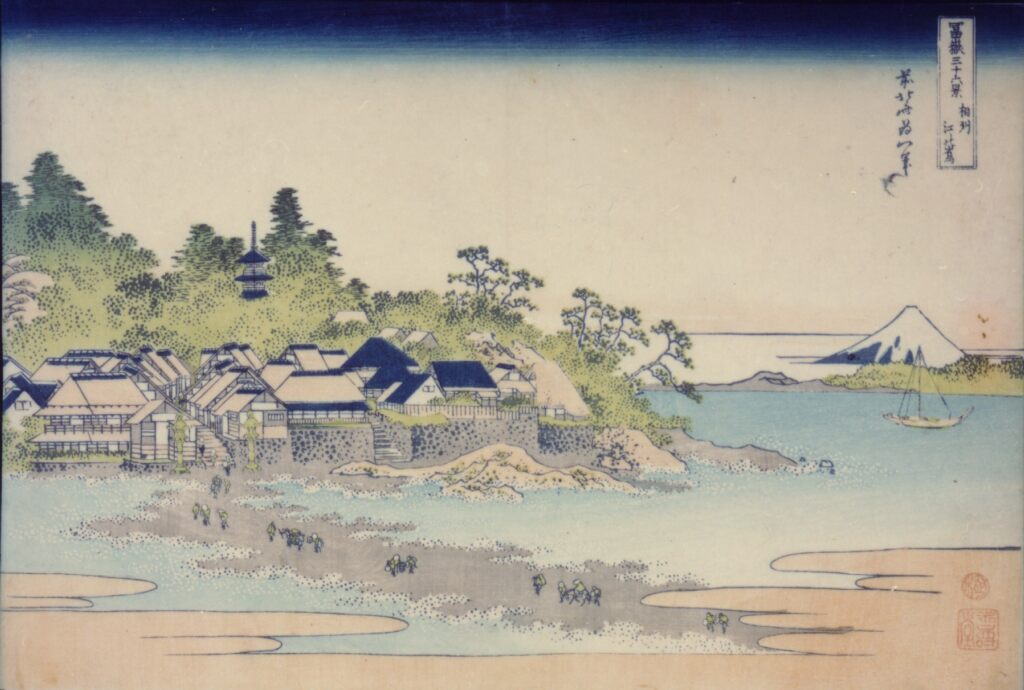資料名 |
Enoshima Island in Sagami Province, from the series Thirty-six Views of Mt. Fuji |
解説 |
Artist: Katsushika Hokusai 1830-1844 (c.Tempou era), Publisher: Eijudou Thirty-six Views of Mt. Fuji is the ultimate masterpieces of Hokusai, and the thirty-six pieces originally published were called “top” while the ten pieces followed the original, because of the high reputation of the series, were called “bottom”. As a total, forty-six works of this series were published. The works of Thirty-six Views of Mt. Fuji are classified into three categories according to the picture mood: the first category is the painting with Yamato-e style tradition, the second category is picture with the Chinese ink painting tradition and the third category is the picture with the Western perspective expression. This particular picture is classified into the Chinese ink painting tradition inherits many elements from it. The Enoshima Island is illustrated as if it is connected to the mainland, expressed in very flat way, reminds viewers of the Chinese landscape painting. Katsushika Hokusai Hōreki 10~Kaei 2 (1760~1849) Hokusai was a pupil of Katsukawa Shunsho; also said to have studied under Kano Yusen, Tsutsumi Torin, and Sumiyoshi Hiroyuki. He produced of wide variety of art and media. Later in his life, he focused more on the paintings and worked beyond the framework of the established ukiyo-e. He had students such as Hokuba, Hokkei, Hokuju and Shinsai. He had a long career period started from An’ei 8 till his death (1779-1849). |
資料番号 |
10008 |







